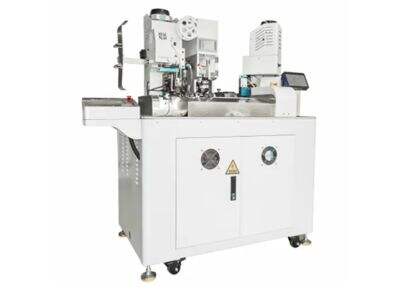Wenn Sie wasserdichte Stecker verwenden, stellen Sie sicher, dass sie guter Qualität sind, da dies ein Bereich sein kann, in dem Probleme auftreten. Wir werden einige einfache Methoden besprechen, um zu überprüfen, wie gut diese wasserdichten Verbindungen funktionieren.
Sicherstellen, dass die Verbindungen stabil hergestellt werden:
Für eine passgenaue Verbindung von wasserdichten Steckern stellen Sie einfach sicher, dass sowohl männliche als auch weibliche Verbindungen fest angezogen werden. Es sollte kein Spiel oder Spalt vorhanden sein. Eine passgenaue Verbindung kann helfen, Wasser einzudämmen, das zu Schäden oder elektrischen Schocks führen könnte.
Anzeichen schlechter wasserdichter Verbindungen:
Schlechte wasserdichte Verbindungen können erkannt werden, wenn Schäden vorhanden sind. Wenn Stecker und Kontakte rostig, korrodiert oder abgenutzt aussehen, sollten sie möglicherweise nicht verwendet werden. Auch wenn Stecker und Kontakte nicht richtig ineinander greifen, ist es am besten, sie auszutauschen.
Zuverlässigkeit des Tests der Verbindungen:
Sie können die Zuverlässigkeit von wasserdichten Steckverbindungen durch einen Kontaktwiderstandstest überprüfen. Dies ist ein Test, der misst, wie gut alle Verbindungen funktionieren. Der Widerstand einer ordnungsgemäßen Verbindung sollte gering sein. Ist der Widerstand hoch, könnte dies auf eine defekte Verbindung hinweisen, die ersetzt werden muss.
Warum Sie einen Isolationstest durchführen sollten:
Isolationswiderstand – Der nächste Schritt, der nicht übersehen werden darf, wird dieser Test sein. Er misst, wie sehr das umgebende Material den Eindringen von Wasser verhindert. Ein hoher Isolationswiderstand zeigt an, dass die Verbindung gut geschützt ist. Ein niedriger Widerstand kann unter anderem zu Problemen wie Kurzschlüssen führen.
Qualitätskontrolle mit Wassertest:
Schließlich können Wassertests durchgeführt werden, um die Qualität der wasserdichten Steckverbindung zu überprüfen. Tauchen Sie den Stecker und das Terminal kurz in Wasser und sehen Sie nach, ob Wasser eindringt. (Bei richtigen Verbindungen sollte es trocken bleiben. Wenn Wasser eindringt, deutet dies darauf hin, dass die Verbindung defekt sein könnte und ersetzt werden sollte.)
 EN
EN
 AR
AR
 BG
BG
 HR
HR
 CS
CS
 DA
DA
 NL
NL
 FI
FI
 FR
FR
 DE
DE
 EL
EL
 HI
HI
 IT
IT
 JA
JA
 KO
KO
 NO
NO
 PL
PL
 PT
PT
 RO
RO
 RU
RU
 ES
ES
 SV
SV
 TL
TL
 IW
IW
 ID
ID
 LV
LV
 LT
LT
 SR
SR
 SK
SK
 SL
SL
 UK
UK
 VI
VI
 SQ
SQ
 GL
GL
 HU
HU
 TH
TH
 TR
TR
 MS
MS
 GA
GA
 CY
CY


